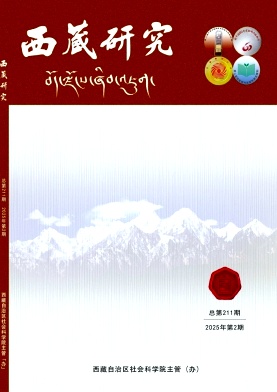| 284 | 0 | 12 |
| 下载次数 | 被引频次 | 阅读次数 |
如来藏思想是大乘佛教思想体系中的重要组成部分。早在吐蕃时期,大译师们就翻译了大量与之相关的经典文献。在后弘期,这一思想得到了全面发展。学界在研究藏传佛教思想时,历来注重对中观和唯识等思想的研究,却忽略了如来藏学说的这一重要内容。《宝性论》之藏译及相关注疏的发展体现了藏传佛教如来藏学说形成历程,并且现代藏族学者对藏传佛教如来藏思想的研究成果亦以此得到激发。
Abstract:The tathāgatagarbha concept is an important part of the Mahayana Buddhist system.In the Tubo period, great translators translated a large number of related classic Sanskrit documents to Tibetan.In the later spread of doctrine period, this idea has been fully developed.When studying the thoughts of Tibetan Buddhism,the Tibetan scholars always paid attention to the research on the concepts of the Madhyamaka and Cittamatra and ignored the important content of Tathāgatagarbha.The traslation of Ratnagotravibhāga and related translation works outline the Tathāgatagarbha thought system embodied in the Tibetan Buddhist doctrine,and inspires modern Tibetan scholars of Tathāgatagarbha in Tibetan Buddhism.
[1]Karl Brunnholzl.When the Clouds Part,The Uttaratantra and Its Meditative Tradition as a Bridge Between Sūtras and Tantra[M].Snow Lion,Boston & London,2014:301.
[2]弥勒,贾曹杰.宝性论与宝性论广释[M].拉萨:西藏藏文古籍出版社,2005:234.
① 《宝性论》是藏传佛教所谓“弥勒五论”中的重要著作,是一部如来藏学说论著,从11世纪传入后,藏族学者对此著作有许多疏论。
② 参见觉顿·木兰慈成(■,1219—1299年)所著《究竟一乘宝性论教诫》,手抄本,147叶。
(1)On the History of the Buddhist Doctrine in India(The New Blue Annals,revised edition Part2) by TsultrimKelsangKhangkar,Professor of Buddhist Studies Faculty of Letters,Otani University,Japanese and Tibetan Buddhist Culture series X,Published by the Tibetan Buddhist Cultue Association Minamida-cho22-9Jodo-ji,Sakyo-ko Kyoto606-8403 Japan,printed by The Western Tibetan Cultural Association Kathmandu,Nepal,August15.2007:140.
(2)在《宝性论》的阐释上,扎格尔·洛桑班典提出了与前辈学者尤其是格鲁派学派不同的意见(参见洛桑班典:《宝性论阐释》,拉卜楞木刻版,拉卜楞寺典籍文献馆藏,第54叶)。同样,居·米旁在他的《宣说如来藏狮子吼》中提出了“如来藏”乃“大中观”的说法(参见谈锡永、邵颂雄:《如来藏二谛见——不败尊者说如来藏》,北京:中国藏学出版社2007年版,第263页)。
(1)参见图丹金巴:《如来藏种姓说》“绪论”第12册(藏文),收录于《西藏文化丛书》,新德里2007年版。
基本信息:
DOI:
中图分类号:B946.6
引用信息:
[1]刀吉仁青,华尔么机.藏传佛教如来藏学说发展研究——以藏族学者的论著为中心[J].西藏研究,2020,No.181(03):97-101.
基金信息:
